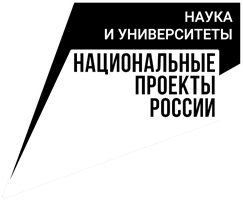Семинар
«Суперкомпьютерное моделирование климатической системы»
Семинар посвящен разнообразным аспектам применения методов суперкомпьютерного моделирования для решения задач прогноза погоды и климата.
Руководитель семинара:
- В.А. Садовничий, академик, ректор Московского государственного университета имени М.В. Ломоносова.
Соруководители семинара:
- Вильфанд Р.М., д.т.н., научный руководитель Гидрометцентра России
- Добролюбов С.А., чл.-корр. РАН, декан Географического факультета МГУ
- Лыкосов В.Н., чл.-корр. РАН, гл.н.с. Института вычислительной математики РАН, зав. лабораторией суперкомпьютерного моделирования природно-климатических процессов НИВЦ МГУ
- Степаненко В.М., д.ф.-м.н., зам. директора НИВЦ МГУ
Ученый секретарь семинара:
- Мортиков Е.В., к.ф.-м.н., н.с. НИВЦ МГУ
ПРОГРАММА СЕМИНАРА
17:30
| D. Mironov | German Weather Service, Offenbach am Main, Germany |
| P. Sullivan | National Center for Atmospheric Research, Boulder, CO, USA |
Turbulence Structure And Mixing Intensity In Stably Stratified Boundary-Layer Flows Over Thermally Heterogeneous Surfaces
he effect of horizontal thermal heterogeneity of the underlying surface on the turbulence structure and mixing intensity in stably stratified boundary-layer (SBL) flows is analysed. Weakly to moderately stable SBLs are examined using large-eddy simulation (LES), while direct numerical simulation (DNS) is used to tackle strongly stable SBLs.
Idealized LES of SBL flows driven by fixed winds and homogeneous and heterogeneous surface temperature are compared. A canonical GABLS1 SBL is taken as a reference. The LES data are used to explore the flow structure, to compute statistical moments of the fluctuating fields, to estimate terms in the second-moment budgets, and to assess the relative importance of various terms in maintaining the budgets. The budgets of the turbulence kinetic energy (TKE), of the temperature variance, and of the vertical and horizontal components of the temperature flux are analysed. The SBL over a heterogeneous surface is more turbulent with larger variances and TKE, is better mixed and is deeper compared to its homogeneous counterpart. Perhaps the most striking difference between the cases is exhibited by the temperature variance and its budget. Due to surface heterogeneity, the third-order moment, i.e., the vertical flux of temperature variance, is non-zero at the surface. Hence, the turbulent transport term (divergence of the third-order moment) not only redistributes the temperature variance in the vertical but is a net gain. The temperature variance in the heterogeneous case is large near the surface. The increase in the temperature variance explains the reduced magnitude of the downward temperature (heat) flux in the heterogeneous SBL. The temperature variance enters the budget of the temperature flux as a buoyancy production term. Since that term is positive, it partially compensates the mean-gradient production term that generates the downward (i.e., negative) temperature flux. An increase of the temperature variance in a heterogeneous SBL results in a reduced magnitude of the temperature flux and hence of the buoyancy flux. Then, less TKE is spent working against gravity, leading to more vigorous mixing.
As a natural extension of the above LES study, DNSs at bulk Reynolds number Re=10^4 and bulk Richardson number Ri=0.25 are performed to analyse the structure and mixing intensity in strongly stable boundary-layer flows. An idealized plane Couette flow set-up is used as a proxy for real-world flows. The flow is driven by a fixed velocity at the upper surface, while the lower surface is at rest. The temperature at the horizontal upper and lower surfaces is either homogeneous or varies sinusoidally in the streamwise direction, while the horizontal-mean temperature is the same in the homogeneous and heterogeneous cases. The stratification is strong enough to quench turbulence over homogeneous surfaces, resulting in velocity and temperature profiles that vary linearly with height. However, turbulence survives over heterogeneous surfaces. Both the molecular diffusion and the turbulence contribute to the downward, i.e., the down-gradient, transfer of horizontal momentum. The total (diffusive plus turbulent) heat flux is directed downward. However, the turbulent contribution to the heat flux appears to be positive, i.e., up the gradient of the mean temperature. A detailed examination of the flow structure along with the analysis of the second-order velocity and temperature covariances and of the vertical-velocity and temperature skewness suggest that the counter-gradient heat transport is due to quasi-organized cell-like vortex motions generated by the surface thermal heterogeneity. These motions act to transfer heat upwards similar to quasi-organized cell-like structures that transfer heat upwards in convective boundary layers. Thus, the flow over heterogeneous surface features local convective instabilities and upward eddy heat transport, although the overall stratification remains stable and the heat is transported downward in the mean. The DNS findings corroborate the LES results outlined above as to the pivotal role of the temperature variance in setting the structure and transport properties of the stably-stratified flow over heterogeneous surfaces, and the importance of third-order transport in maintaining the temperature-variance budget.
Motivated by the LES and DNS results, possible ways to incorporate the effect of surface temperature heterogeneity into SBL parameterization schemes, including the surface-layer schemes, are discussed. Tricky issues related to the coupling of the tiled surface schemes with the SBL turbulence closure schemes are briefly considered. Some further challenging issues pertinent to the SBL over thermally heterogeneous surfaces are outlined. Work is underway (P. Sullivan and D. Mironov, unpublished) to analyse the effect of the surface heterogeneity orientation (e.g., temperature-wave crests normal vs. parallel to the mean flow) on the flow structure and mixing intensity. Results will be reported in subsequent publications.
The work was partially supported by the NCAR Geophysical Turbulence Program and by the European Commission through the COST Action ES0905. The National Center for Atmospheric Research is sponsored by the National Science Foundation.
Заседание семинара пройдет в форме вебинара на платформе Zoom.
Ссылка на конференцию: https://us02web.zoom.us/j/87151408075?pwd=b1p4b3hRMXIwSDdPQklBVFRqWUR5dz09
Meeting ID: 871 5140 8075
Passcode: 072000
Инструкции по установке и использованию платформы Zoom доступны, например, здесь:
https://support.zoom.us/hc/ru/articles/201362033-Начало-работы-на-ПК-и-Mac
Для упрощения нашей работы во время семинара, просим сделать следующее: заранее проверить, что Zoom у Вас работает (в настройках приложения Zoom можно проверить качество работы динамиков и микрофона) и ввести в настройках вашего профиля фамилию, имя и отчество полностью (это можно сделать на странице вашего профиля (https://us02web.zoom.us/profile)) — в этом случае коллеги по конференции будут видеть, как к Вам обращаться.

